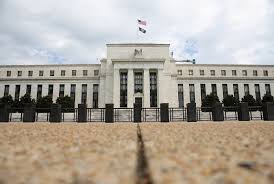What rising bond yields mean for markets

Yields on U.S. Treasuries have surged to their highest level in more than a year from record lows hit in 2020, as Federal Reserve commitments to hold rates near zero for years to come encouraged investors to bet economic growth and inflation will heat up. Though yields remain low by historical standards, a rapid rise can ripple through to affect assets ranging from equities and commodities to housing prices.
Why are yields rising?
In recent months, breakthroughs in developing COVID-19 vaccines and fiscal stimulus have raised expectations the economy will bounce back. Improving risk appetite has encouraged investors to buy riskier assets such as stocks rather than bonds. Expectations of inflation have also jumped, driving bond prices lower and yields higher. Weaker demand for debt was evident in last month’s disappointing auction of seven-year U.S. Treasury notes that helped push up yields.
Where do investors think yields will go next?
Investors generally believe yields will climb more in 2021, though some think the Fed could move to cap a rise in yields that it views as extreme enough to threaten the economic recovery. Some analysts think this could happen if 10-year Treasury yields rise much above 2% without substantial economic improvement.
What does the rise in yields mean for other assets?
Higher Treasury yields have made the U.S. dollar more attractive to income-seeking investors, boosting it from three-year lows reached in January.
On the other hand, the spot price for non-yielding gold is down this year after outperforming nearly all other assets last year.
For stocks, rising yields are a mixed bag, slowing a rally in technology and other growth stocks as investors worry about erosion of long-cash flows for these companies. But higher yields have also lifted financial stocks and accelerated a rotation into other beaten-down sectors.
How could higher Treasury yields affect individuals?
Effects on individual pocketbooks can be seen most directly in the housing market. The interest rates charged on fixed-rate mortgages tend to shadow moves in Treasury yields and have already begun moving higher.
Savers could start to see rates increase in high yield savings accounts again.








